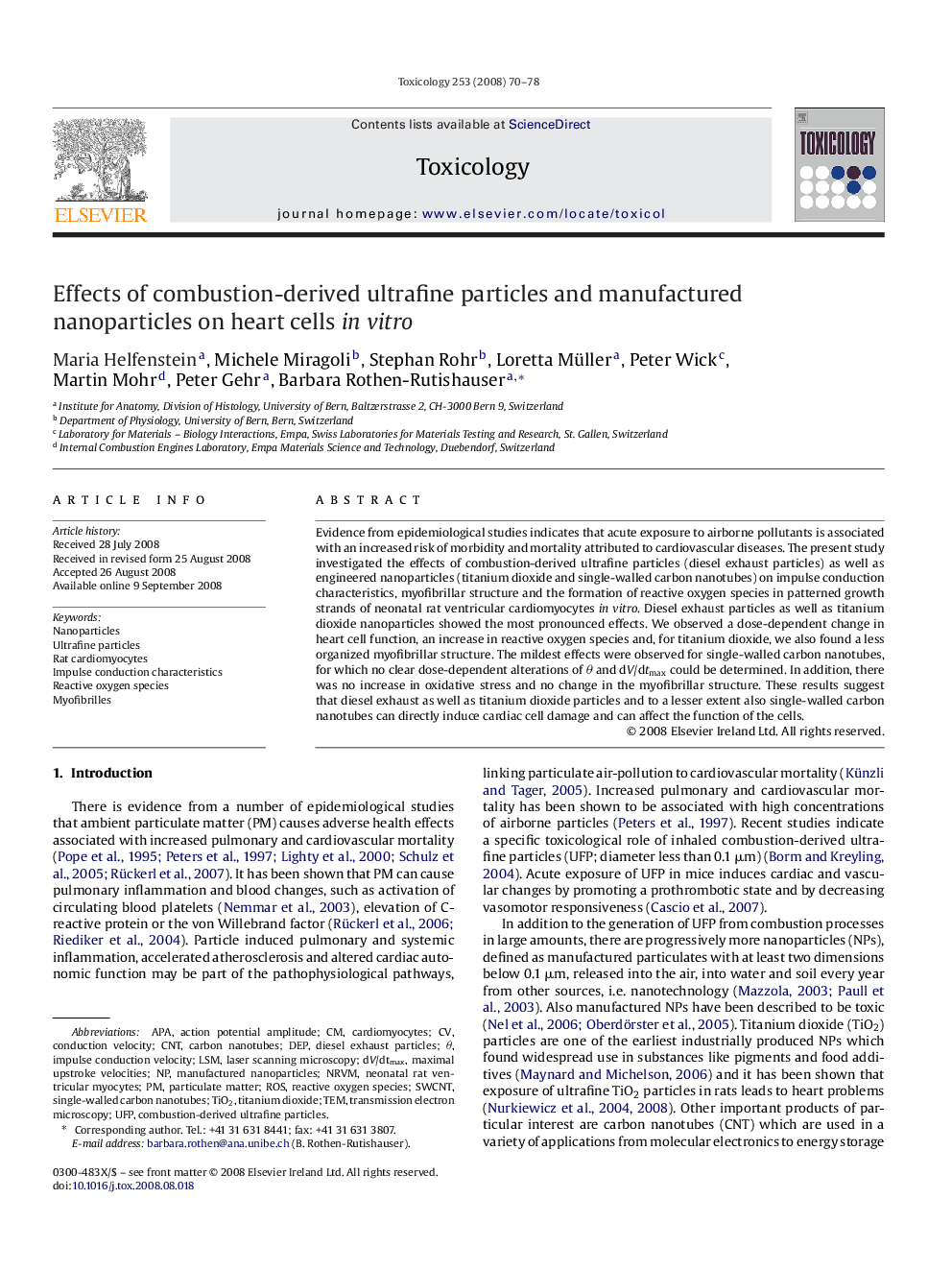| Article ID | Journal | Published Year | Pages | File Type |
|---|---|---|---|---|
| 2597065 | Toxicology | 2008 | 9 Pages |
Evidence from epidemiological studies indicates that acute exposure to airborne pollutants is associated with an increased risk of morbidity and mortality attributed to cardiovascular diseases. The present study investigated the effects of combustion-derived ultrafine particles (diesel exhaust particles) as well as engineered nanoparticles (titanium dioxide and single-walled carbon nanotubes) on impulse conduction characteristics, myofibrillar structure and the formation of reactive oxygen species in patterned growth strands of neonatal rat ventricular cardiomyocytes in vitro. Diesel exhaust particles as well as titanium dioxide nanoparticles showed the most pronounced effects. We observed a dose-dependent change in heart cell function, an increase in reactive oxygen species and, for titanium dioxide, we also found a less organized myofibrillar structure. The mildest effects were observed for single-walled carbon nanotubes, for which no clear dose-dependent alterations of θ and dV/dtmax could be determined. In addition, there was no increase in oxidative stress and no change in the myofibrillar structure. These results suggest that diesel exhaust as well as titanium dioxide particles and to a lesser extent also single-walled carbon nanotubes can directly induce cardiac cell damage and can affect the function of the cells.
